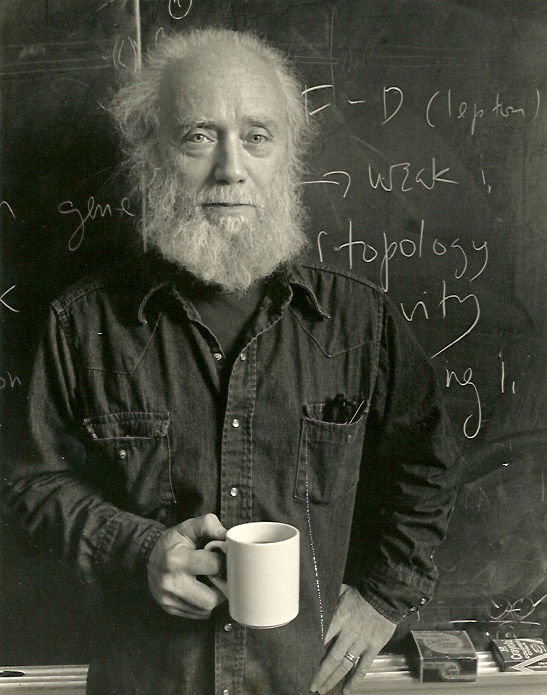Platform of Physics & Chemistry

Everything needs a platform. You can buy or sell things at a trading platform like amazon.com. Likewise, all physical and chemical phenomena occurring in the universe need a platform. The platform will be the vacuum or free space.
What is a platform? The first thing that comes to my mind with this word is the platform of a train station. You wait for the train at the platform. Passengers can safely board the trains there. A Greek song “to tréno févgi stis októ” (the train leaves at eight) seems to ring in my ears. I can feel the despair of a woman who has to leave her lover on the battlefield at a train station. Nowadays, with the development of internet technology, you can often see the word "platform" online. Roughly understood, it is cyberspace in which certain specific services are provided. I have published and am selling books through a business platform called Amazon. Amazon is one of the world's largest online distribution platforms. The automotive industry also uses the word. A car is completed by manufacturing and assembling 30,000 parts. Though the number of parts has decreased with the introduction of electric cars, more than 10,000 parts are still used. The foundation on which these numerous parts are assembled and seated is the automobile platform. The most important thing in car design is the platform, and several car models are made on one platform. In addition, several automakers share a single platform.

Figure 1. The platform of a train station is a place where the train stops and passengers can safely get on and off. Photo from Unsplash by Terence Burke
A platform can be understood as an indispensable basis for any tangible or intangible action. The paintings drawn by famous painters such as Picasso and Gogh exist on drawing paper or canvas. Drawing paper or canvas is a platform for painters. Similarly, moving pictures viewed through TV requires a platform called a liquid crystal screen (LCD) or a light-emitting diode (LED) screen. Nam June Paik, the founder of video art, used CRTs used in old TVs as a platform.

- Figure 2. "The Starry Night" by Vincent van Gogh. Van Gogh's 1889 oil painting on canvas is regarded as the greatest work in the history of Western painting. It is currently in the collection of the New York Museum of Art. The appearance of the night sky churning makes us think that the universe is filled with something other than a vacuum.
But what would happen without such a platform? Even if there is no platform at the train station, getting on and off the train is not impossible. It is just a bit inconvenient or difficult. In action movies, scenes in which the protagonist jumps off a running train or gets on a train are not difficult to be seen. A train station platform is perceived quite differently from other types of platforms. Transactions through internet-based business platforms can be replaced with transactions through traditional markets, department stores, or supermarkets. Of course, markets and department stores are also a kind of platform. Even without these, trading is not impossible. In a very primitive way, you can think of bartering between individuals. Even if there is no sharing platform in automobiles, it is not impossible to make automobiles. Instead, it takes a lot of time to design and manufacture a car. You will have more difficulties in securing the reliability of the finished model than other models manufactured based on the platform.
Finally, consider a platform such as a drawing paper or a TV screen. Among more than 900 paintings by Vincent van Gogh, “The Starry Night” (1889), painted in his later years, is considered one of the greatest works in the history of Western painting. This painting is an oil painting on canvas. Imagine that the canvas suddenly disappears, and only the paint of the painting remains. The sky of "The starry night" and the village below it will disappear in an instant.

- Figure 3. David Finkelstein wrote in his book, “The Philosophy of Vacuum”: The structure of the vacuum is the central problem of physics today: the fusion of the theories of gravity and the quantum is a sub problem. Photo by Alan David, 1984.
Raise your head and look up into the distant universe. Stars are flashing on flat or curved surfaces in the distant sky. They are flashing in pixels as if they are on a TV screen. Isn't the empty dark space of the universe is made of three-dimensional pixels? Isn't the vacuum that fills the universe a huge platform that contains our matter? I ask myself such silly questions. If there is really nothing in the vacuum, there is no reason for objects to be separated from each other. Isn't it? There's a popular saying: There's no reason we're far apart when there's nothing between you and me. One physicist said that if God had created the universe, he had no reason to have created a useless empty space. What is the vacuum? I imagine that the vacuum is a three-dimensional platform. It is composed of pixels similar to those of an LED or LCD. In other words, the vacuum is the platform of physics. All cosmic phenomena appear on this platform. Any theory, be it quantum mechanics, cosmology, or standard particle physics, would be nothing but a house of cards if it were not based on this platform. In this series of articles, all the physical phenomena of the universe will be considered in the context of the platform of physics called vacuum. Technology is going along the way that science has made. But science is pioneering a new way. It is the way to Theory of Everything.